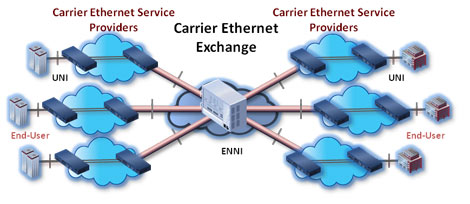
Figure 1: Carrier Ethernet Exchange (Courtesy MEF)
Interconnections have always been a key focus for data centers located in areas with high concentrations of network service providers. Some of these data center providers are now investing in specialized exchanges to support Carrier Ethernet services.
The Metro Ethernet Forum’s formal definition of an Ethernet Exchange, a form of an External Network-Network Interface (ENNI), is “an interconnect point among service providers where Carrier Ethernet Services are exchanged.” From an end user’s point of view, you want your service provider to supply this service so you can have a direct Ethernet connection from end-to-end.
End Users See Benefits of Ethernet
Today, most enterprises are still encapsulating their native Ethernet data into TDM/SONET/SDH then de-encapsulating it at the other end. However, more and more, end users are seeing the benefits of Ethernet Services and perhaps eventually, the entire public network may be running native Ethernet.
There are currently just a few vendors of Carrier Ethernet Exchange services: CENX, Equinix, Neutral Tandem and Telx.
- CENX: Carrier Ethernet Neutral Exchange (CENX) was the first Carrier Ethernet Exchange. CENX has Carrier Ethernet Exchange services currently available in Chicago, Los Angeles, London, Miami, New Jersey, New York and Hong Kong. The system is resilient and supports high availability with Gigabit and 10-Gigabit Ethernet connections. MemberLink is a new service from CENX that allows customers to connect to any remote Ethernet Exchange through member companies.
- Equinix: Most widely known for its co-location and managed services business, Equinix was an early entrant as a Carrier Ethernet Exchange as well. It has a global footprint on four continents: North America, South America, Europe, Asia and is not only servicing carriers, but has started to open its exchange to cloud companies.
- Neutral Tandem: Its Carrier Ethernet Exchange was launched in early 2010. Since then, the company acquired Tinet and has made recent progress with its new EtherCloud offering. With this, Tinet can provide end-to-end international connectivity to any company. It allows global coverage using VPLS through Juniper equipment in the core and Cisco in the access.
- Telx: While Telx is best known as a leading colocation provider, it was also at the forefront of Ethernet exchanges. Telx is a carrier-neutral data center colocation provider and has several facilities around North America which enables it to supply seamless Ethernet connection not only between carriers, but between any of its enterprise colo customers as well. Its Ethernet Exchange services have a range of options depending on customer’s needs. It charges by the port and can connect customers at 100 Mbps, Gigabit or 10G data rates through its Cisco ASR 9000 equipment. Telx expects to incorporate 40G as needed – probably not until 2012/2013 timeframe, though. No equipment is oversubscribed and low latency options are available for premiums.
While it is rather difficult to quantify this market, Ethernet exchanges services are expected to have around a 20-percent CAGR over the next five years starting at 100’s of millions of dollars in 2011. Plenty of revenue to support the few entrants that have decided to focus on it so far.
Lisa Huff is a contributing editor for Data Center Knowledge. She is Chief Technology Analyst for DataCenterStocks.com and Principal Analyst at Discerning Analytics.




